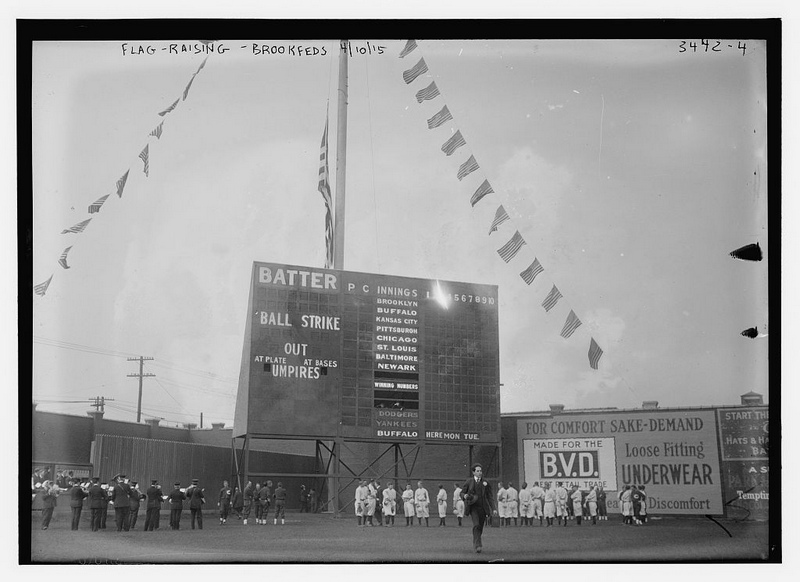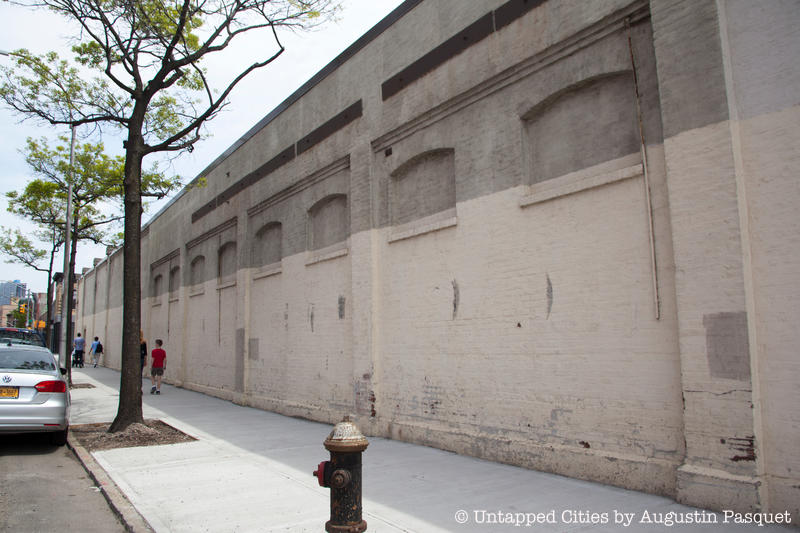2. Washington Park, Brooklyn
 Third version of Washington Park on April 10, 1915. Image via Library of Congress Prints and Photographs Division
Third version of Washington Park on April 10, 1915. Image via Library of Congress Prints and Photographs Division
Before the move to Ebbets Field, the Dodgers played in a series of ballparks that were collectively known as Washington Park. Washington Park was a group of three separate stadiums in the Park Slope/Gowanus neighborhood between Third Street and Fourth Avenue that were in use by the Dodgers between 1898 and 1912.
The first park was in use from 1883 to 1891, and contained an old building that is now known as the Old Stone House, a site used as a headquarters by General George Washington during the Battle of Long Island during the Revolutionary War. The Old Stone House was also the birthplace of the lost sport of ice baseball.
In 1892, the Dodgers began to split time between the first park of Washington Park and a newer facility called Eastern Park. They continued to split time until 1898 until they moved in to the second version of Washington Park due to poor attendance. The Dodgers’ new home had a unique quality in that the park often smelled due to the surrounding factories and the nearby Gowanus Canal.
During their time spent at the second Washington Park, owner Charles Ebbets slowly invested money into properties in Flatbush, and eventually developed Ebbets Field as the Dodgers’ stadium of the future in 1913.
Once the Dodgers moved to their new stadium, a new professional team, the Brooklyn Tip-Tops, acquired the Washington Park property in 1914 and rebuilt the second park with steel and concrete, replicating the initial Wrigley Field. The Tip-Tops were a short lived team however, and disbanded the following year, leaving the park unused, and eventually demolished in 1926. The property is now owned by Con Edison.
 Historical wall from the Tip-Top stadium
Historical wall from the Tip-Top stadium
A remaining wall is often incorrectly attributed to being the remnants of the Dodgers stadium, but it is now believed to be part of the Tip-Top stadium. Photos from the Tip-Tops era indicate that the windowed wall was the backside of the bleachers, with the openings possibly for horses, and that both parts of the wall likely date to 1914, after the Dodgers left. Ensconced within the parapet portion of the wall was the scoreboard for the game, with advertisements painted on the inside of the wall.
In spite of demolition of some buildings in the property in 2009, Con Edison pledged to keep the wall standing. The wall, of which about half remains, is now the backside to a loading dock. Painted in a pale pink, the wall is an easily missed piece of history in the rapidly developing, post-industrial neighborhood.





